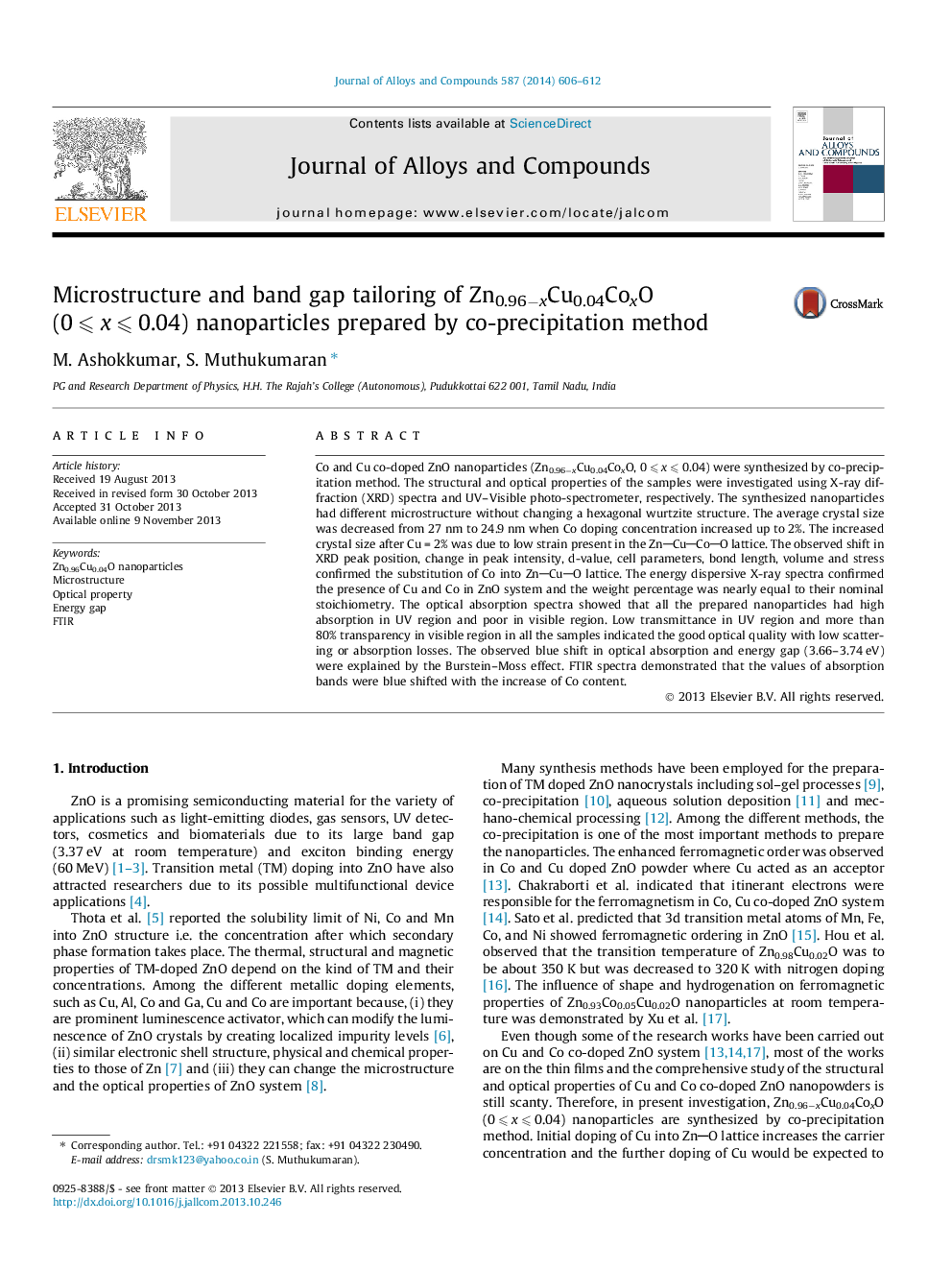| Article ID | Journal | Published Year | Pages | File Type |
|---|---|---|---|---|
| 1612353 | Journal of Alloys and Compounds | 2014 | 7 Pages |
•Zn0.96−xCu0.04CoxO nanoparticles were successfully synthesized.•Co2+ into CuZnO lattice was confirmed by EDX, FTIR and optical studies.•Above 80% transparency in visible region is useful for optoelectronic devices.
Co and Cu co-doped ZnO nanoparticles (Zn0.96−xCu0.04CoxO, 0 ⩽ x ⩽ 0.04) were synthesized by co-precipitation method. The structural and optical properties of the samples were investigated using X-ray diffraction (XRD) spectra and UV–Visible photo-spectrometer, respectively. The synthesized nanoparticles had different microstructure without changing a hexagonal wurtzite structure. The average crystal size was decreased from 27 nm to 24.9 nm when Co doping concentration increased up to 2%. The increased crystal size after Cu = 2% was due to low strain present in the ZnCuCoO lattice. The observed shift in XRD peak position, change in peak intensity, d-value, cell parameters, bond length, volume and stress confirmed the substitution of Co into ZnCuO lattice. The energy dispersive X-ray spectra confirmed the presence of Cu and Co in ZnO system and the weight percentage was nearly equal to their nominal stoichiometry. The optical absorption spectra showed that all the prepared nanoparticles had high absorption in UV region and poor in visible region. Low transmittance in UV region and more than 80% transparency in visible region in all the samples indicated the good optical quality with low scattering or absorption losses. The observed blue shift in optical absorption and energy gap (3.66–3.74 eV) were explained by the Burstein–Moss effect. FTIR spectra demonstrated that the values of absorption bands were blue shifted with the increase of Co content.
